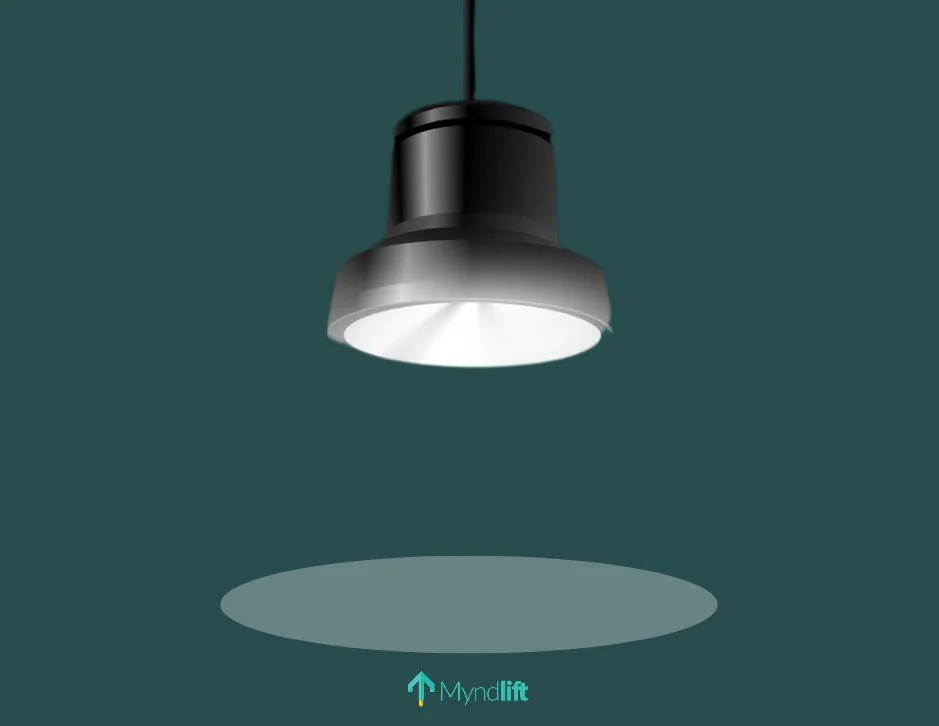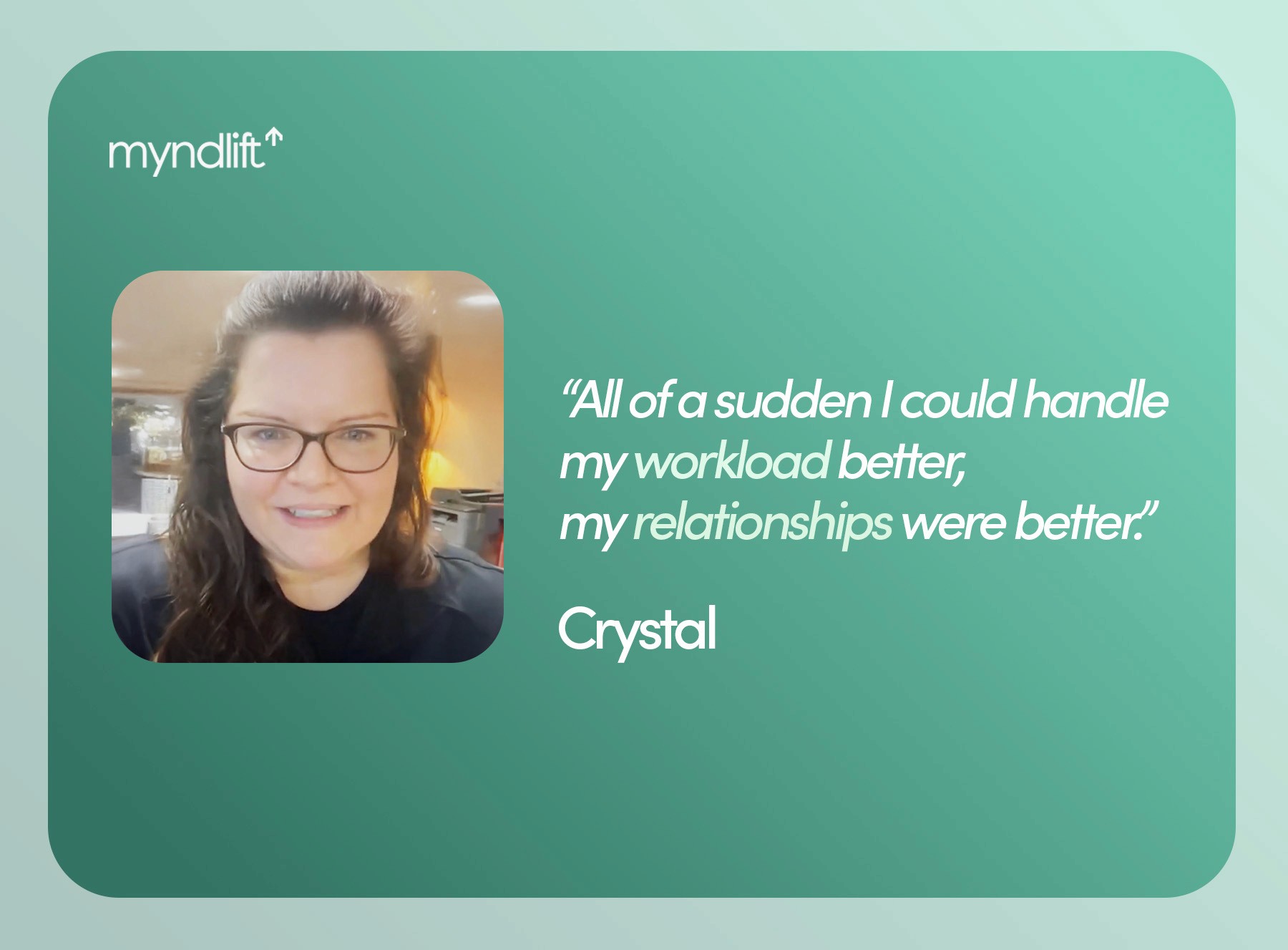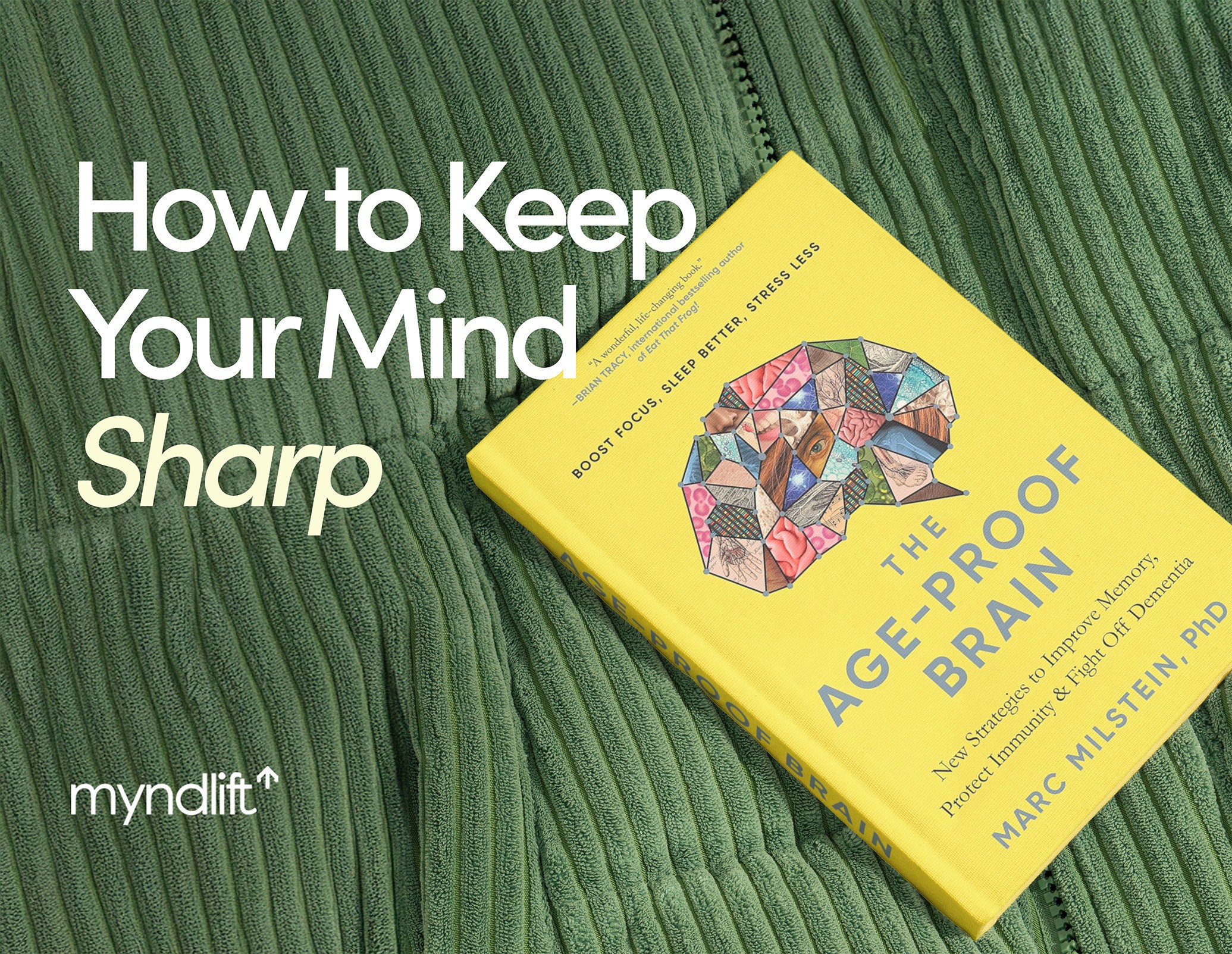We've all been there: walking into a room and feeling like everyone is staring at us, noticing every single thing we do. It's an uncomfortable feeling that can make even the most confident of us feel awkward and self-conscious.
What we're dealing with here is what social psychologists call the spotlight effect. The spotlight effect refers to our psychological bias to overestimate how much those around us notice intricate aspects about ourselves, such as our appearance. Unfortunately, this can cause extreme anxiety, which can detrimentally impact our confidence and self-esteem.
So, what is the spotlight effect? Why do we have it? And how can we overcome it? In this article, we’ll explore these questions by addressing:
Understanding the spotlight effect and implementing these strategies can help overcome the impact of the spotlight effect on your life, and make you feel more comfortable and confident in social situations.
What Is the Spotlight Effect?
The spotlight effect is a cognitive bias that causes people to overestimate the extent to which others are paying attention to them. It stems from our innate tendency to place ourselves at the center of our own world, and locks us in an egocentric perspective that makes us feel as though we are constantly under the scrutiny of others, when in reality this is often not the case.
Recent research in social psychology highlights the widespread prevalence of the spotlight effect and demonstrates how it can lead to an inaccurate evaluation of how much we are noticed by others. This is especially true when we engage in what we deem “embarrassing” behaviors or actions, such as dropping something or stumbling when we’re at the front of a line.
Signs of the Spotlight Effect
According to experts, being aware of our biases can help us make sense of how much we are truly in the social spotlight. Understanding how much we are affected by this phenomenon is a crucial first step in reducing its impact on our lives.
Here are a few common signs of the spotlight effect:
Believing that others are constantly scrutinizing your appearance or actions. For example, wearing a bold outfit and feeling like everyone is staring at your clothes.
Worrying about minor flaws or mistakes being noticed by others, such as stumbling over your words in a presentation and thinking that everyone noticed the error.
Feeling like the center of attention, even when there is no reason to. For instance, being late to a meeting and assuming that everyone is judging you for your unprofessionalism
Assuming that others are as focused on your perceived flaws as you are, e.g., feeling embarrassed about a small mistake and believing it will be the main topic of conversation among others
In each of these situations, the spotlight effect may cause you to feel overly self-conscious, even though others likely didn't notice or care about the issue at hand.
Spotlight Effect Psychology: What Causes the Spotlight Effect?
Feeling like we're constantly under the spotlight may have something to do with our evolutionary past due to our need to be accepted into a group to improve our chances of survival.
In the book The Social Self, authors Joseph Forgas and Kipling Williams discuss how our need to belong and maintain our social connections was crucial for our early human ancestors. Back when we lived in small tribes, being part of a group was essential for survival. If someone was left out or rejected from the group, they would struggle to make it on their own.
This need for belongingness has carried over into today's world and feeds into the anxieties that cause the spotlight effect. That's why our brains are wired to be overly attentive to how others might perceive and evaluate us, which is why we sometimes feel like we're always in the limelight.
Furthermore, research has shown a relationship between social anxiety and the spotlight effect. Studies have found that individuals with social anxiety tend to perceive negative judgments from others more intensely. This can make them more susceptible to feeling like they're always in the spotlight.
6 Ways to Overcome Spotlight Effect Bias
Knowing the causes of the spotlight effect is helpful, but this doesn’t take away from how hard it is to experience day to day. However, it’s reassuring to know that there are ways to overcome spotlight effect bias. Let’s consider six strategies on how to do so:
1. Reframe Your Negative Thoughts
Changing the way you think about anxiety can help you manage it better. A study found that using inoculation messages (messages that encourage people to reframe their thoughts and view anxiety in a more positive light) could help individuals feel less anxious before and during public speaking, a situation that often triggers the spotlight effect.
By identifying irrational beliefs or cognitive distortions that contribute to negativity, you can challenge them with evidence-based, rational thinking. But how? Well, when you recognize a negative thought, reframe this by choosing a positive (or even neutral) alternative. For example, this could be changing a thought like “I’m not good enough” to “I am still growing and learning” or “I always try my best, and that is good enough.”
2. Consider the Illusion of Transparency
People often assume their emotions and thoughts are easily detected by others, leading to what is called the “illusion of transparency”. According to research, this comes from the same internal mechanisms as the spotlight effect. People who believe others are focused on what they are doing (the spotlight effect) often worry that they also notice what they are feeling (the illusion of transparency).
While this may be beneficial in some situations, other times it can cause problems, such as if you are uninterested in what someone is saying to you. In this situation, if you’re experiencing the illusion of transparency, you may think, “Oh no, they can tell that I’m getting bored of what they’re saying!”
If you can target the illusion of transparency, you may therefore be able to alleviate some of the impact of the spotlight effect. But how can you do this? Remember, everyone is the center of their own world. So, when it feels like everyone is staring at or scrutinizing you, try to remind yourself that science shows us that they are less aware of your feelings than you assume. This awareness can help you feel less exposed, fostering a sense of ease in everyday situations.
3. Take Someone Else’s Perspective
Stepping into someone else's shoes can reduce egocentrism, helping you gain a balanced view of the situation. Often, we are more forgiving of others' mistakes than our own. Adopting this viewpoint can alleviate the fear of others' criticism.
A study by Macrae et al. (2016) found that imagining an event from a third-person perspective reduced the spotlight effect and feelings of embarrassment. By simply changing one's visual perspective, it's possible to diminish the illusion of personal salience and feel less self-conscious and anxious in social situations.
For example, imagine you were at a party and you spilled your drink down your shirt. Your initial thought may be: “Oh no, everyone’s staring. They’re all judging me.” However, shifting this to a third-person perspective may look like: “Imagine if the person sitting opposite you right now spilled their drink. Would you judge them? Or would you notice for a brief few seconds before carrying on with your conversation?
4. Practice Present-Moment Awareness
Incorporating mindfulness into your daily routine can help reduce the spotlight effect and its associated stress and anxiety.
Brief mindfulness-based meditation, as short as 5-15 minutes, has been shown to significantly decrease egocentrism and improve judgment accuracy, particularly in the moment.
Adopting a third-person imagery perspective during mindfulness meditation can also enhance the accuracy of your judgments. This involves considering a current issue or decision you have to make and approaching it as if you’re an outsider looking in.
For example, if you dropped your pen while giving a presentation, a third-person thought may be, “She dropped her pen in front of a big group of people, but no one seems to have noticed. She’s far more aware of it because she’s nervous.”
5. Recognize the Positives of Being Uniquely You
The spotlight effect, as discussed in The Social Self by Forgas & Williams, is connected to our fundamental human need to fit in with others socially. This excessive attentiveness to others' evaluations can lead to needless worry and anxiety, making it challenging for us to recognize our unique qualities.
You can embrace your individuality by:
Identifying and jotting down your strengths – all of them!Setting yourself a meaningful intention, such as “I will shift my perspective from one of inner criticism to self-compassion and kindness.”Surrounding yourself with kind, caring people who lift you up, not bring you down. Looking at yourself in the mirror for 5 minutes each morning and thanking your body for all that it does for you.
6. Seek Professional Support for Anxiety
An effective treatment for the spotlight effect stemming from social anxiety can be a combination of therapy and medication. Furthermore, two of the most common evidence-based therapy approaches for anxiety are cognitive behavioral therapy (CBT) and neurofeedback therapy (Moradi et a., 2011).
Neurofeedback is a brain-training technique that utilizes the brain’s natural ability to reorganize and adapt – a capability known as neuroplasticity.
Brain training techniques like neurofeedback encourage neuroplasticity. Ultimately, this means that neurofeedback alters our neurons and their interconnections in our brains to help us remain calm in situations that may trigger the spotlight effect.
For example, when trying neurofeedback training with Myndlift, you immerse yourself in a video game while measuring your brainwave activity. Each time your brainwaves enter the optimal range (indicating you are calm and focused), you’ll receive a form of positive feedback, such as points within the game.
This naturally encourages you to remain within the optimal brainwave range as much as possible throughout the game, helping you stay composed even when you come up against stressful situations while playing.
In terms of CBT, a systematic review by Mangolini et al. (2019) identifies evidence supporting the use of CBT to reduce safety behaviors or avoidance, which can improve treatment outcomes for social anxiety. Moreover, the study found that medication can also be helpful for social anxiety, although their tolerability may be lower than placebo.
The authors found that combining CBT and medication, along with exercise and stepped-care models, can lead to better results. Stepped care models are a method of monitoring and offering highly effective care and treatment, but with minimal resources. You only “step up” to specialist treatment if this is necessary.
Consider adopting a comprehensive and multifaceted approach to treating social anxiety and minimizing the impact of the spotlight effect on your everyday life.
Final Verdict on the Spotlight Effect
The spotlight effect is a common cognitive bias that can make us feel overly self-conscious in social situations.
By understanding the root causes of this phenomenon and implementing strategies such as reframing negative thoughts, practicing mindfulness, and embracing our uniqueness, we can overcome the spotlight effect and feel more comfortable in our own skin.
It’s always helpful to remember how common the spotlight effect is, and that you're not alone in experiencing it. Being mindful of the fact that people are often too focused on themselves to pay as much attention to you as you may think can help you have a better relationship with yourself as well as others.
Myndlift provides a personalized expert-guided brain training program that can help you achieve your goals towards reaching improved focus and calm. Check if you’re eligible to kick start your journey with us for better brain health from here.
About the author:
Emma Loker
Emma is a practicing trainee Child and Adolescent Psychotherapist studying at the University of Cambridge and a psychology writer with years of experience. She achieved a 1st Class Honors Degree in Psychology from Aston University in Birmingham.
About the checker:
Kaija Sander, Ph.D.
Kaija Sander is a cognitive neuroscientist and scientific consultant for Myndlift. She holds a BSc in Biomedical Science with a specialization in Neuroscience and Mental Health from Imperial College London and a PhD in Neuroscience from McGill University. Her doctoral research focused on brain connectivity relating to second language learning success. She is passionate about the broader applications of science to have a positive impact on people’s lives.
References
Baumeister, R. F., & Leary, M. R. (1995). The need to belong: Desire for interpersonal attachments as a fundamental human motivation. Psychological Bulletin, 117(3), 497–529. https://doi.org/10.1037/0033-2909.117.3.497
Carlson, E. N., & Oltmanns, T. F. (2015). The Role of Metaperception in Personality Disorders: Do People with Personality Problems Know How Others Experience Their Personality? Journal of Personality Disorders, 29(4), 449–467. https://doi.org/10.1521/pedi.2015.29.4.449
Epley, N., & Gilovich, T. (2004). Are Adjustments Insufficient? Personality and Social Psychology Bulletin, 30(4), 447–460. https://doi.org/10.1177/0146167203261889
Forgas, J.P., & Williams, K.D. (2002). The Social Self: Cognitive, Interpersonal, and Intergroup Perspectives. Psychology Press.
Gilovich, T., Medvec, V. H., & Savitsky, K. (2000). The spotlight effect in social judgment: An egocentric bias in estimates of the salience of one’s own actions and appearance. Journal of Personality and Social Psychology, 78(2), 211–222. https://doi.org/10.1037/0022-3514.78.2.211
Golubickis, M., Tan, L. B. G., Falbén, J. K., & Macrae, C. N. (2016). The observing self: Diminishing egocentrism through brief mindfulness meditation. European Journal of Social Psychology, 46(4), 521–527. https://doi.org/10.1002/ejsp.2186
Ho, F. Y. Y., Yeung, W. F., Ng, T. H., & Chan, C. S. (2016). The Efficacy and Cost-Effectiveness of Stepped Care Prevention and Treatment for Depressive and/or Anxiety Disorders: A Systematic Review and Meta-Analysis. Scientific Reports, 6(1). https://doi.org/10.1038/srep29281
Jackson, B., Compton, J., Thornton, A., & Dimmock, J. A. (2017). Re-Thinking Anxiety: Using Inoculation Messages to Reduce and Reinterpret Public Speaking Fears. PLOS ONE, 12(1), e0169972. https://doi.org/10.1371/journal.pone.0169972
Macrae, C. N., Mitchell, J. P., McNamara, D. L., Golubickis, M., Andreou, K., Møller, S., Peytcheva, K., Falbén, J. K., & Christian, B. M. (2016). Noticing Future Me. Personality and Social Psychology Bulletin, 42(7), 855–863. https://doi.org/10.1177/0146167216644961
Mangolini, V. I., Andrade, L. H., Neto, F. L., & Wang, Y. (2019). Treatment of anxiety disorders in clinical practice: a critical overview of recent systematic evidence. Clinics, 74, e1316. https://doi.org/10.6061/clinics/2019/e1316
Moradi, A., Pouladi, F., Pishva, N., Rezaei, B., Torshabi, M., & Mehrjerdi, Z. A. (2011). Treatment of Anxiety Disorder with Neurofeedback: Case Study. Procedia - Social and Behavioral Sciences, 30, 103–107. https://doi.org/10.1016/j.sbspro.2011.10.021
Moscovitch, D. A., Rodebaugh, T. L., & Hesch, B. D. (2012). How awkward! Social anxiety and the perceived consequences of social blunders. Behaviour Research and Therapy, 50(2), 142–149. https://doi.org/10.1016/j.brat.2011.11.002





